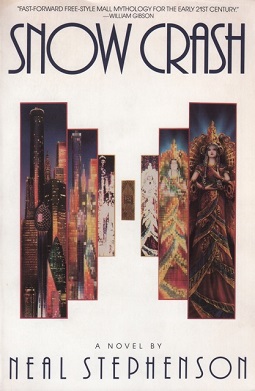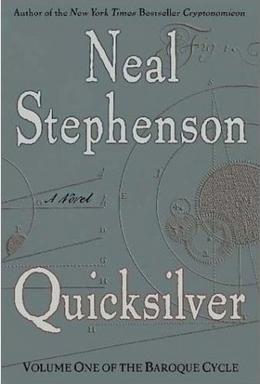
Detective fiction is a subgenre of crime fiction and mystery fiction in which an investigator or a detective—whether professional, amateur or retired—investigates a crime, often murder. The detective genre began around the same time as speculative fiction and other genre fiction in the mid-nineteenth century and has remained extremely popular, particularly in novels. Some of the most famous heroes of detective fiction include C. Auguste Dupin, Sherlock Holmes, and Hercule Poirot. Juvenile stories featuring The Hardy Boys, Nancy Drew, and The Boxcar Children have also remained in print for several decades.

Kim Eric Drexler is an American engineer best known for introducing molecular nanotechnology (MNT), and his studies of its potential from the 1970s and 1980s. His 1991 doctoral thesis at Massachusetts Institute of Technology (MIT) was revised and published as the book Nanosystems: Molecular Machinery Manufacturing and Computation (1992), which received the Association of American Publishers award for Best Computer Science Book of 1992. He has been called the "godfather of nanotechnology".

Molecular nanotechnology (MNT) is a technology based on the ability to build structures to complex, atomic specifications by means of mechanosynthesis. This is distinct from nanoscale materials. Based on Richard Feynman's vision of miniature factories using nanomachines to build complex products, this advanced form of nanotechnology would make use of positionally-controlled mechanosynthesis guided by molecular machine systems. MNT would involve combining physical principles demonstrated by biophysics, chemistry, other nanotechnologies, and the molecular machinery of life with the systems engineering principles found in modern macroscale factories.

Neal Town Stephenson is an American writer known for his works of speculative fiction. His novels have been categorized as science fiction, historical fiction, cyberpunk, postcyberpunk, and baroque.

Cryptonomicon is a 1999 novel by American author Neal Stephenson, set in two different time periods. One group of characters are World War II–era Allied codebreakers and tactical-deception operatives affiliated with the Government Code and Cypher School at Bletchley Park (UK), and disillusioned Axis military and intelligence figures. The second narrative is set in the late 1990s, with characters that are descendants of those of the earlier time period, who employ cryptologic, telecom, and computer technology to build an underground data haven in the fictional Sultanate of Kinakuta. Their goal is to facilitate anonymous Internet banking using electronic money and (later) digital gold currency, with a long-term objective to distribute Holocaust Education and Avoidance Pod (HEAP) media for instructing genocide-target populations on defensive warfare.

Ralph C. Merkle is an American computer scientist and mathematician. He is one of the inventors of public-key cryptography, the inventor of cryptographic hashing, and more recently a researcher and speaker on cryonics.

Elizabeth Cleghorn Gaskell, often referred to as Mrs Gaskell, was an English novelist, biographer, and short story writer. Her novels offer a detailed portrait of the lives of many strata of Victorian society, including the very poor. Her first novel, Mary Barton, was published in 1848. Gaskell's The Life of Charlotte Brontë, published in 1857, was the first biography of Charlotte Brontë. In this biography, she wrote only of the moral, sophisticated things in Brontë's life; the rest she omitted, deciding certain, more salacious aspects were better kept hidden. Among Gaskell's best known novels are Cranford (1851–1853), North and South (1854–1855), and Wives and Daughters (1864–1866), all of which were adapted for television by the BBC.

Snow Crash is a science fiction novel by the American writer Neal Stephenson, published in 1992. Like many of Stephenson's novels, its themes include history, linguistics, anthropology, archaeology, religion, computer science, politics, cryptography, memetics, and philosophy.

A molecular assembler, as defined by K. Eric Drexler, is a "proposed device able to guide chemical reactions by positioning reactive molecules with atomic precision". A molecular assembler is a kind of molecular machine. Some biological molecules such as ribosomes fit this definition. This is because they receive instructions from messenger RNA and then assemble specific sequences of amino acids to construct protein molecules. However, the term "molecular assembler" usually refers to theoretical human-made devices.
Mechanosynthesis is a term for hypothetical chemical syntheses in which reaction outcomes are determined by the use of mechanical constraints to direct reactive molecules to specific molecular sites. There are presently no non-biological chemical syntheses which achieve this aim. Some atomic placement has been achieved with scanning tunnelling microscopes.

Quicksilver is a historical novel by Neal Stephenson, published in 2003. It is the first volume of The Baroque Cycle, his late Baroque historical fiction series, succeeded by The Confusion and The System of the World. Quicksilver won the Arthur C. Clarke Award and was nominated for the Locus Award in 2004. Stephenson organized the structure of Quicksilver such that chapters have been incorporated into three internal books titled "Quicksilver", "The King of the Vagabonds", and "Odalisque". In 2006, each internal book was released in separate paperback editions, to make the 900 pages more approachable for readers. These internal books were originally independent novels within the greater cycle during composition.

Neo-Victorianism is an aesthetic movement that features an overt nostalgia for the Victorian period, generally in the context of the broader hipster subculture of the 1990s-2010s. It is also likened to other "neos", which do not simply look back to the past but also reiterate and replay it in more diverse and complicated ways. This characteristic makes neo-Victorian art difficult to define conclusively.
Since the advent of the cyberpunk genre, a number of cyberpunk derivatives have become recognized in their own right as distinct subgenres in speculative fiction, especially in science fiction. Rather than necessarily sharing the digitally and mechanically focused setting of cyberpunk, these derivatives can display other futuristic, or even retrofuturistic, qualities that are drawn from or analogous to cyberpunk: a world built on one particular technology that is extrapolated to a highly sophisticated level, a gritty transreal urban style, or a particular approach to social themes.
Patricia Nell Warren, also known by her pen name Patricia Kilina, was an American novelist, poet, editor and journalist. Her second novel, The Front Runner (1974), was the first work of contemporary gay fiction to make the New York Times Best Seller list. Her third novel, The Fancy Dancer (1976), was the first bestseller to portray a gay priest and to explore gay life in a small town.

Giant's Bread is a novel by British writer Agatha Christie, first published in the UK by Collins in April 1930 and in the US by Doubleday later in the same year. The UK edition retailed for seven shillings and sixpence (7/6) and the US edition at $1.00. The dust jacket of the first UK edition was by the artist Margaret Macadam. Giant's Bread is the first of six novels Christie published under the pen name "Mary Westmacott".
The use of nanotechnology in fiction has attracted scholarly attention. The first use of the distinguishing concepts of nanotechnology was "There's Plenty of Room at the Bottom", a talk given by physicist Richard Feynman in 1959. K. Eric Drexler's 1986 book Engines of Creation introduced the general public to the concept of nanotechnology. Since then, nanotechnology has been used frequently in a diverse range of fiction, often as a justification for unusual or far-fetched occurrences featured in speculative fiction.

Kathleen Ann Goonan was an American science fiction writer. Several of her books have been nominated for the Nebula Award. Her debut novel Queen City Jazz was a New York Times Notable Book of the Year, and her novel In War Times was chosen by the American Library Association as Best Science Fiction Novel for their 2008 reading list. In July 2008, In War Times won the John W. Campbell Memorial Award for Best Science Fiction Novel. Her novel This Shared Dream was released in July 2011 by Tor Books.
Nanopunk refers to an emerging subgenre of science fiction that is still very much in its infancy in comparison to its ancestor-genre, cyberpunk, and some of its other derivatives.

The Dervish House is a 2010 science fiction novel by British author Ian McDonald. The novel was shortlisted for the Arthur C. Clarke Award in 2011, and won the BSFA Award and the John W. Campbell Memorial Award in the same year. It was a nominee for the 2011 Hugo Award for Best Novel. The French translation La maison des derviches won the Planete-SF Blogger's Award in 2012.
Fiona Kelly McGregor is an Australian writer, performance artist and art critic whose third novel, Indelible Ink, won the 2011 The Age Book of the Year award.














